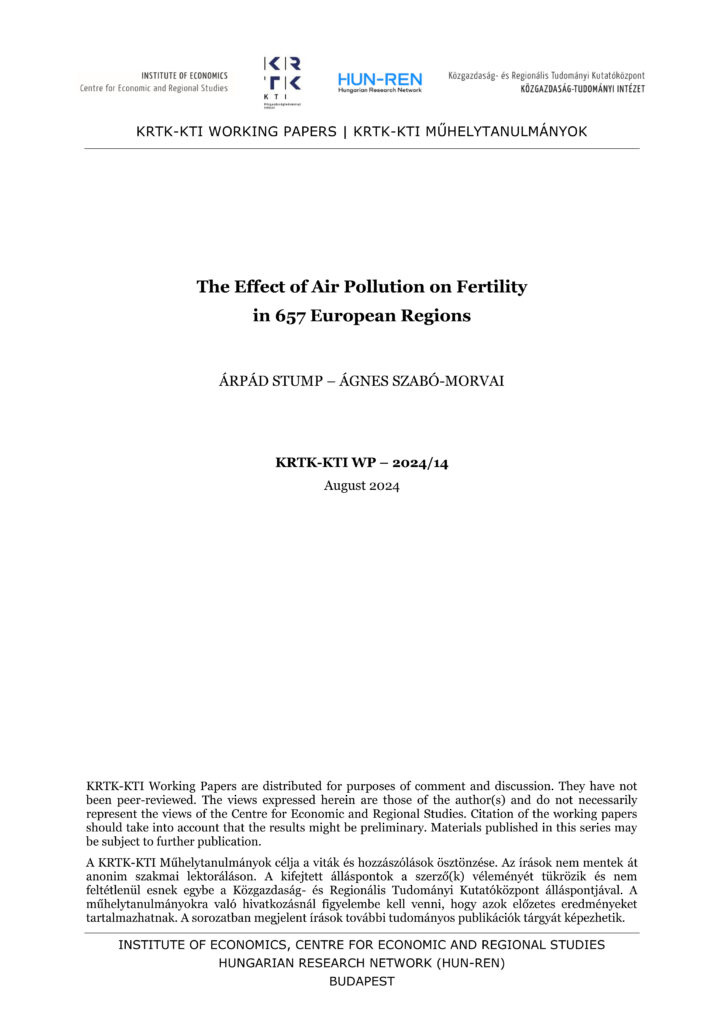This study examines the impact of ambient air pollution on birth rates in Europe. We estimate the causal effect of air pollution on fertility by utilizing variations in wind speed and the number of heating days as instrumental variables for air quality. Our analysis encompasses 657 NUTS-3 regions, with each region having 2 to 6 years of observations between 2015 and 2020. Thus, our study is the first to extend this analysis to multiple countries, pollutants, and years. Our findings indicate that a one standard deviation increase in particulate matter concentration levels leads to a 5.1% decrease in birth rates the following year and an additional 5.9% decrease two years later. Moreover, a similar increase in air pollution has a more pronounced adverse effect on fertility in countries with lower GDP. Other pollutants have little role in shaping fertility outcomes. This result is important for environmental policies with limited resources.
Publikációk / The Effect of Air Pollution on Fertility in 657 European Regions
2025
Sep
17
M
T
W
T
F
S
S
1
2
3
4
5
6
7
8
9
10
11
12
13
14
15
16
17
18
19
20
21
22
23
24
25
26
27
28
29
30
1
2
3
4
5
Next month >
a
2025
Sep
17
M
T
W
T
F
S
S
1
2
3
4
5
6
7
8
9
10
11
12
13
14
15
16
17
18
19
20
21
22
23
24
25
26
27
28
29
30
1
2
3
4
5
Next month >


